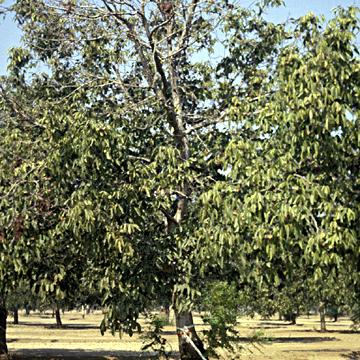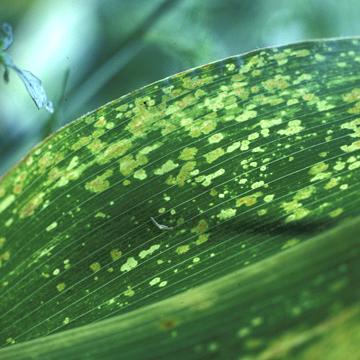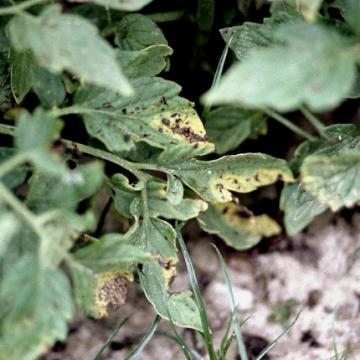DISEASE: Deep bark canker
HOST: Walnut
Removal of bark revealed pitted vascular tissues.
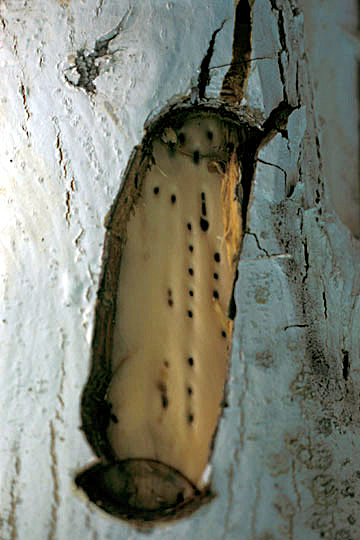
Deep bark canker | Walnut
DISEASE: Deep bark canker
HOST: Walnut (Juglans regia 'Hartley')
PATHOGEN: Brenneria rubrifaciens
PATHOGEN SYNONYM: Erwinia rubrifaciens
SOURCE: N. Schaad
DISEASE: Deep bark canker
HOST: Walnut
Dead limbs are characteristic of advanced stage of disease.
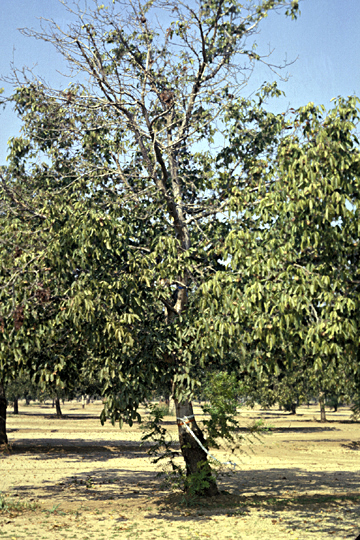
Deep bark canker | Walnut
DISEASE: Deep bark canker
HOST: Walnut (Juglans regia 'Hartley')
PATHOGEN: Brenneria rubrifaciens
PATHOGEN SYNONYM: Erwinia rubrifaciens
SOURCE: N. Schaad
DISEASE: Holcus spot
HOST: Corn (Maize)
Corn leaf with chlorotic spots.

Holcus spot | Corn (Maize)
DISEASE: Holcus spot
HOST: Corn (Maize) (Zea mays)
PATHOGEN: Pseudomonas syringae pv. syringae
SOURCE: L. Claflin
DISEASE: Syringae leaf spot
HOST: Tomato
Leaves with brown necrotic lesions and chlorotic margins. Symptoms vary greatly among cultivars. Some have black or brown lesions with bright yellow, chlorotic areas and others do not have yellowing.

Syringae leaf spot | Tomato
DISEASE: Syringae leaf spot
HOST: Tomato (Lycopersicon esculentum)
PATHOGEN: Pseudomonas syringae pv. syringae
SOURCE: R. Gitaitis
DISEASE: Syringae seedling blight and leaf spot
HOST: Pepper
Blight lesions (on transplants) usually begin as water-soaked spots that later turn brown to black. Lesions are on cotyledons and first true leaves.
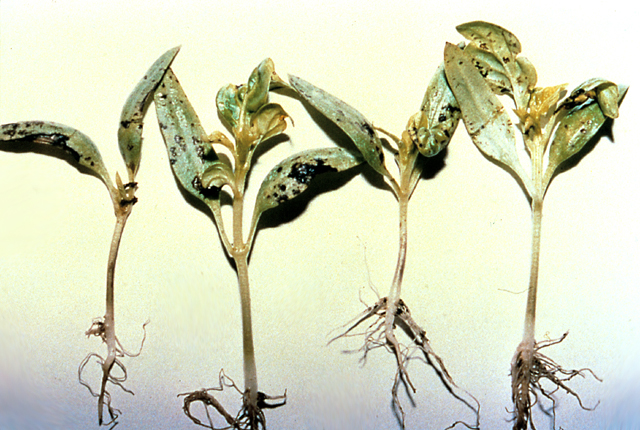
Syringae seedling blight and leaf spot | Pepper
DISEASE: Syringae seedling blight and leaf spot
HOST: Pepper (Capsicum annuum)
PATHOGEN: Pseudomonas syringae pv. syringae
SOURCE: APS



